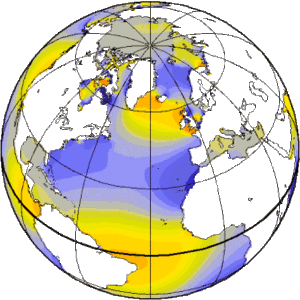The up and down of ocean tides

Ocean tides represent more than 80% of the variability of the surface in the open ocean. High tide, low tide... the rhythm of the tides seems to rock the oceans, reflecting the movements of the Moon and Sun. Precise knowledge of them is vital for many maritime and coastal activities. It is not easy to ignore tides, given that variations in sea level can reach 10 metres in some ports, and that currents change with the ebb and flow. Satellite altimetry now provides regular measurements of sea level in the middle of the ocean, which means that forecasting of tides has been improved. In addition to the publication of tide calendars, we have improved our understanding of the influence of the Moon on the Earth and, somewhat unexpectedly, on its climate.
Further information :
- Dosssiers : Tides, ocean under influences.
- Poster : Mediterranean tides - more than meets the eye.
- Data : Global Tides FES2012




